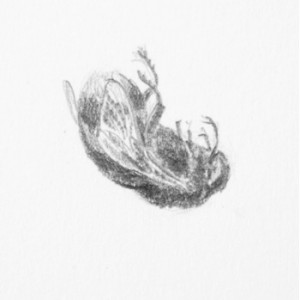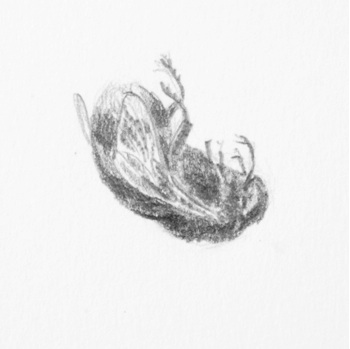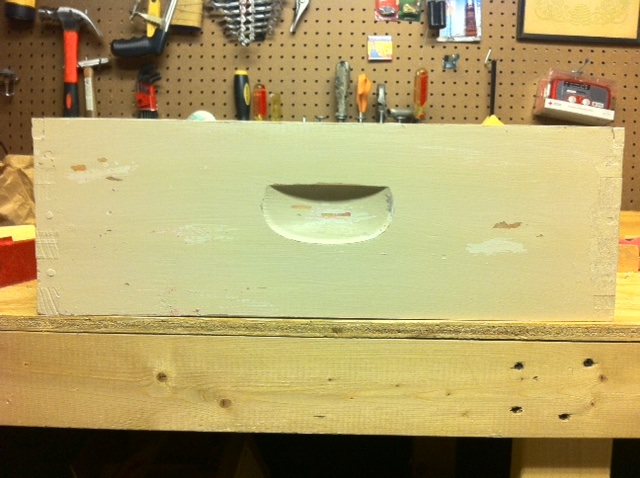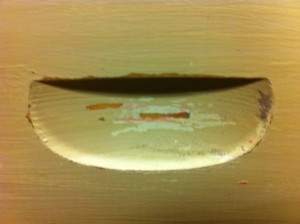
I revved up the table saw and made three inner covers for my nuc hives, and I cut a round opening in each through which I can feed the bees their syrup.
But when I opened the hives to give the bees their snug, new, inner covers, I discovered one of the hives dead. A dead hive is soooo quiet. Creepy. And disheartening.
Wow. The dead hive really surprised me…this is not the time of year for a colony to completely die off. And the other nucs, all of which have the same arrangement, were doing fine. So, I presented all the living hives with their fancy new inner cover and a new jar of syrup, and they’re all still flying.
After sort of reviewing the situation to figure out what happened, I scraped the pile of dead bees into the grass. I’m leaving the comb from that hive in its box and out in the sun so wax moths don’t destroy it before winter hits us.
What happened to the Nicola hive? I’m not sure, but the comb and all the dead bees were wet. Either condensation (warm days + cold nights = condensation build up) had collected on the top cover and dripped onto the bees, or (and this is my suspicion) I didn’t let a proper vacuum seal the inverted jar of syrup I placed atop the hive, and it dripped onto the bees. And they died.
Either way, I guess I killed them. Dang.
I’ve learned to cut myself a lot of slack when it comes to making mistakes that cost either bees or honey. It’s disappointing, but I try to consider these lessons learned. And I’ve found that it’s good for me to immediately get over the situation…analyze the hive, say some sort of thank you to the bees, and scrape them out onto the ground. Then I clean up the equipment for the next colony.




